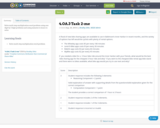
Solve multi step multiplication word problem using one digit by 3 digit problems and using minutes to hours to solve
- Subject:
- Mathematics
- Material Type:
- Homework/Assignment
- Date Added:
- 08/20/2018

Solve multi step multiplication word problem using one digit by 3 digit problems and using minutes to hours to solve
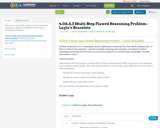
This resource will enable students to determine flawed reasoning in a division word problem that involves interpreting remainders.
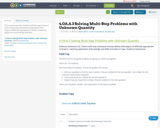
This resource provides students with the opportunity to solve a multi-step contextual word problem with a degree of difficulty appropriate to Grade 4, requiring application of knowledge and skills.
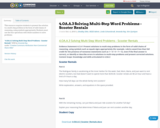
This resource requires students to present the solution to a multi-step problem in the form of valid chains of reasoning, using symbols appropriately. Students must use the four operations with whole numbers to solve problems.
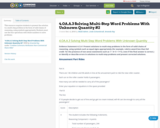
This resource requires students to present the solution to a multi-step problem in the form of valid chains of reasoning, using symbols appropriately. Students must use the four operations with whole numbers to solve problems.
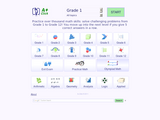
A+ Click is an interactive collection of more than 3700 math problems and answers for K-1 K-12 school program. It defines the personal level of math knowledge. You move up into the next level if you give 5 correct answers in a row. Practice makes perfect.

In this task, students can see that if the price level increases and peopleŐs incomes do not increase, they arenŐt able to purchase as many goods and services; in other words, their purchasing power decreases.
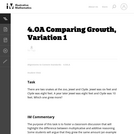
The purpose of this task is to foster a classroom discussion that will highlight the difference between multiplicative and additive reasoning.
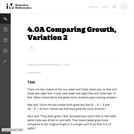
The purpose of this task is to assess studentsŐ understanding of multiplicative and additive reasoning.
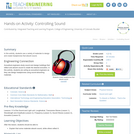
In this activity, students use a variety of materials to design and create headphones that absorb sound.
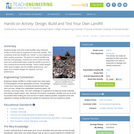
Students design and build model landfills using materials similar to those used by engineers for full-scale landfills. Their completed small-size landfills are "rained" on and subjected to other erosion processes. The goal is to create landfills that hold the most garbage, minimize the cost to build and keep trash and contaminated water inside the landfill to prevent it from causing environmental damage. Teams create designs within given budgets, test the landfills' performance, and graph and compare designs for capacity, cost and performance.
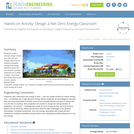
Students create a concept design of their very own net-zero energy classroom by pasting renewable energy and energy-efficiency items into and around a pretend classroom on a sheet of paper. They learn how these items (such as solar panels, efficient lights, computers, energy meters, etc.) interact to create a learning environment that produces as much energy as it uses.
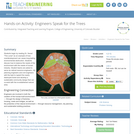
Students begin by reading Dr. Seuss' "The Lorax" as an example of how overdevelopment can cause long-lasting environmental destruction. Students discuss how to balance the needs of the environment with the needs of human industry. Student teams are asked to serve as natural resource engineers, city planning engineers and civil engineers with the task to replant the nearly destroyed forest and develop a sustainable community design that can co-exist with the re-established natural area.
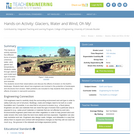
This hands-on activity explores five different forms of erosion (chemical, water, wind, glacier and temperature). Students rotate through stations and model each type of erosion on rocks, soils and minerals. The students record their observations and discuss the effects of erosion on the Earth's landscape. Students learn about how engineers are involved in the protection of landscapes and structures from erosion. Math problems are included to help students think about the effects of erosion in real-world scenarios.
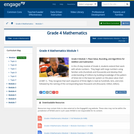
In this 25-day module of Grade 4, students extend their work with whole numbers. They begin with large numbers using familiar units (hundreds and thousands) and develop their understanding of millions by building knowledge of the pattern of times ten in the base ten system on the place value chart (4.NBT.1). They recognize that each sequence of three digits is read as hundreds, tens, and ones followed by the naming of the corresponding base thousand unit (thousand, million, billion).
Find the rest of the EngageNY Mathematics resources at https://archive.org/details/engageny-mathematics.
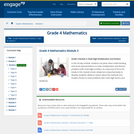
In this 43-day module, students use place value understanding and visual representations to solve multiplication and division problems with multi-digit numbers. As a key area of focus for Grade 4, this module moves slowly but comprehensively to develop students ability to reason about the methods and models chosen to solve problems with multi-digit factors and dividends.
Find the rest of the EngageNY Mathematics resources at https://archive.org/details/engageny-mathematics.
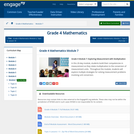
In this 20-day module, students build their competencies in measurement as they relate multiplication to the conversion of measurement units. Throughout the module, students will explore multiple strategies for solving measurement problems involving unit conversion.
Find the rest of the EngageNY Mathematics resources at https://archive.org/details/engageny-mathematics.
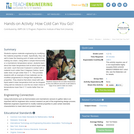
Students explore materials engineering by modifying the material properties of water. Specifically, they use salt to lower the freezing point of water and test it by making ice cream. Using either a simple thermometer or a mechatronic temperature sensor, students learn about the lower temperature limit at which liquid water can exist such that even if placed in contact with a material much colder than 0 degrees Celsius, liquid water does not get colder than 0 °C. This provides students with an example of how materials can be modified (engineered) to change their equilibrium properties. They observe that when mixed with salt, liquid water's lower temperature limit can be dropped. Using salt-ice mixtures to cool the ice cream mixes to temperatures lower than 0 °C works better than ice alone.
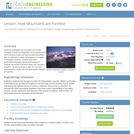
Students investigate how mountains are formed. Concepts include the composition and structure of the Earth's tectonic plates and tectonic plate boundaries, with an emphasis on plate convergence as it relates to mountain formation. Students learn that geotechnical engineers design technologies to measure movement of tectonic plates and mountain formation, as well as design to alter the mountain environment to create safe and dependable roadways and tunnels.
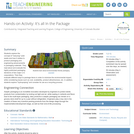
Students explore the concept of "reducing" solid waste and how it relates to product packaging and engineering advancements in packaging materials. They read about and evaluate the highly publicized packaging decisions of two major U.S. corporations. Then they evaluate different ways to package items in order to minimize the environmental impact, while considering issues such as cost, availability, product attractiveness, etc. In addition, students explore "hydropulping" and consider its use as a recycling process.